Breastfeeding can be a magical experience for some mothers, but for others, it's far from easy, but finding the best breast pump can make life easier. After all, it's your baby, your choice, and we are huge advocates for doing what you believe is best for you and your little one. If you do decide to go down the breastfeeding route, but don't wish to be tied down by the responsibility of feeding, then finding a breast pump to suit your needs is essential.
If you're a working mum, someone who loves to do lunch dates, or you want the option of your partner or family helping out with feeds, a breast pump may be your best option. Did you know expressing even small quantities of milk can bring pain relief if your breasts are engorged or swollen? There are so many reasons why a mum might choose to express breastmilk, and luckily for us, there are plenty of different types of pumps to suit every need.
Best Breast Pumps At A Glance:
Best overall breast pump: Lola&Lykke Smart Electric Breast Pump, £145 on Lola&Lykke
Best breast pump for multi-tasking: Elvie Stride Double Electric Breast Pump, £299 on Amazon
Best two-in-one breast pump: MAM 2-in-1 Double Breast Pump, £259 on Amazon
If you're heading back into the office, you might want to opt for a hands-free breast pump, or if you're ready for that much-needed girls' night out, finding the best electric breast pump that will allow you to enjoy your evening without feeling uncomfortable is key. Although all pumps roughly do the same thing, they are not all made equal. Some pumps will help you to produce milk at a different speed, some pumps are noisy, whilst others are almost silent and certain pumps will offer more control and personalisation than others. As we said, there's something for everyone.
Unlike most baby purchases, you can't try before you buy when it comes to a breast pump, so we've gathered as much information as possible to help you make an informed purchase. From the best Elvie breast pumps to celebrity-fave pumps, keep scrolling below. Happy pumping!
SHOP: The Best Breast Pumps for 2024
Best overall breast pump
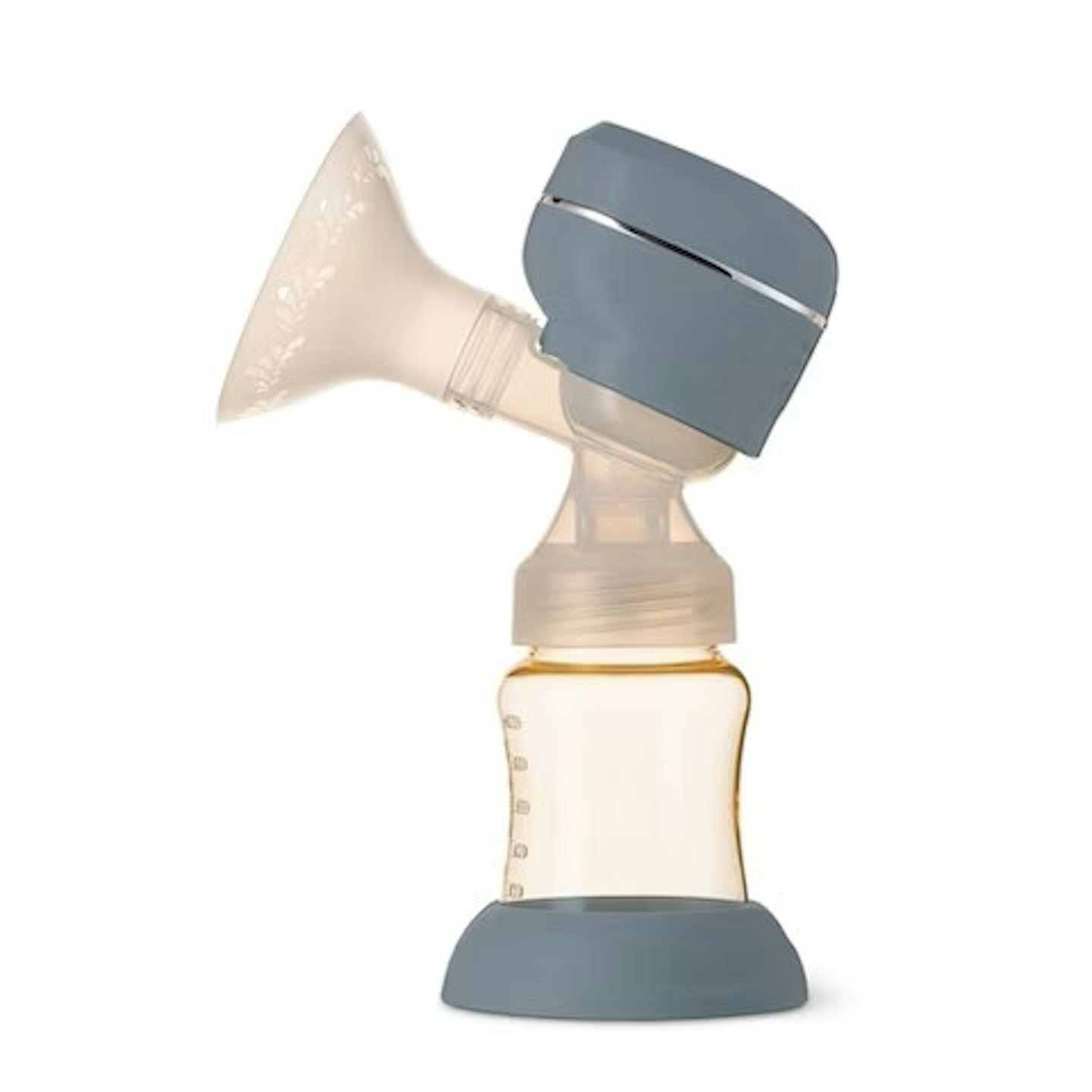 Lola&Lykke
Lola&Lykkelolalykke.com
The Lola&Lykee Smart Electric Breast Pump has touchscreen technology, a memory button and a timer for easy tracking and recording of pumping sessions. You can control all the variables, such as the level of suction and speed at which the pump extracts milk from your breast, via the control panel.
Our friends at Mother&Baby awarded this pump the Gold winner in the 2023 Mother&Baby Awards. They loved the streamlined design; it is great for super-convenient pumping - and we can't help but agree.
Their mum testers found this a comfortable experience as the six stimulation settings and nine expression modes mimic the baby's natural sucking pattern. Plus, the ultra-soft silicone breast shield helps massage the breast to promote let-down and optimise milk flow.
We love that this machine has a USB rechargeable battery with a two-hour battery life, making it perfect for taking out and about. The light motor unit connected to the pump is fantastic for wireless use.
You can pump directly into the milk bag, feed directly from the bag and store milk safely with the handy adapter - making this a must-have for mums returning to work.
Read our full Lola&Lykke® Smart Electric Breast Pump review on Mother&Baby
Pros
- Efficient
- Portable
- Comfortable
- Easy to clean
Cons
- Doesn't come with a carrying case
| Type: | Electric |
| Battery: | 2 hours |
| Dimensions: | 28 x 12.5 x 5.5 |
| Weight: | 290g |
| Milk Capacity: | 150ml each |
Best double breast pump
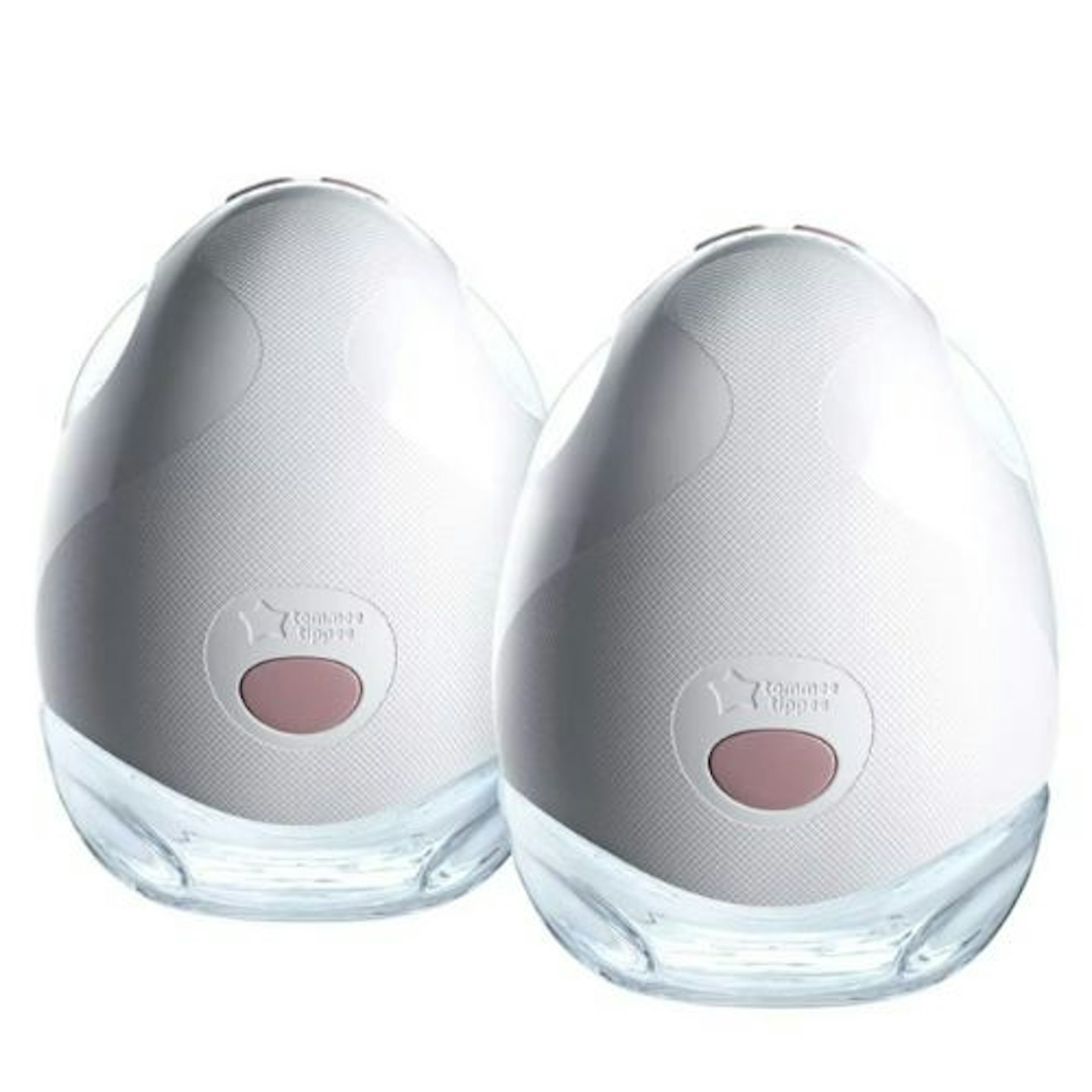 Boots
Boots The Tommee Tippee Made for Me In-Bra Wearable Breast Pump fits into your nursing bra. This pump provides smooth suction and increased comfort through its patented double-valve technology. We love that this pump offers quieter pumping with no wires, power units or plugs. There's nothing worse than being tied down with wires and not being able to move for a good half an hour.
This pump also has a smart app that provides full control of your expressing routine. We love the LED guidelight that provides perfect nipple alignment, which helps to ensure you are as comfortable as possible.
Pros
- Great packaging
- Double pump
- Guidelight
- Strong suction
Cons
- Some women found it tricky to clean
| Type: | Electric |
| Battery: | 4 hours |
| Milk Capacity: | 150ml |
Best two-in-one breast pump
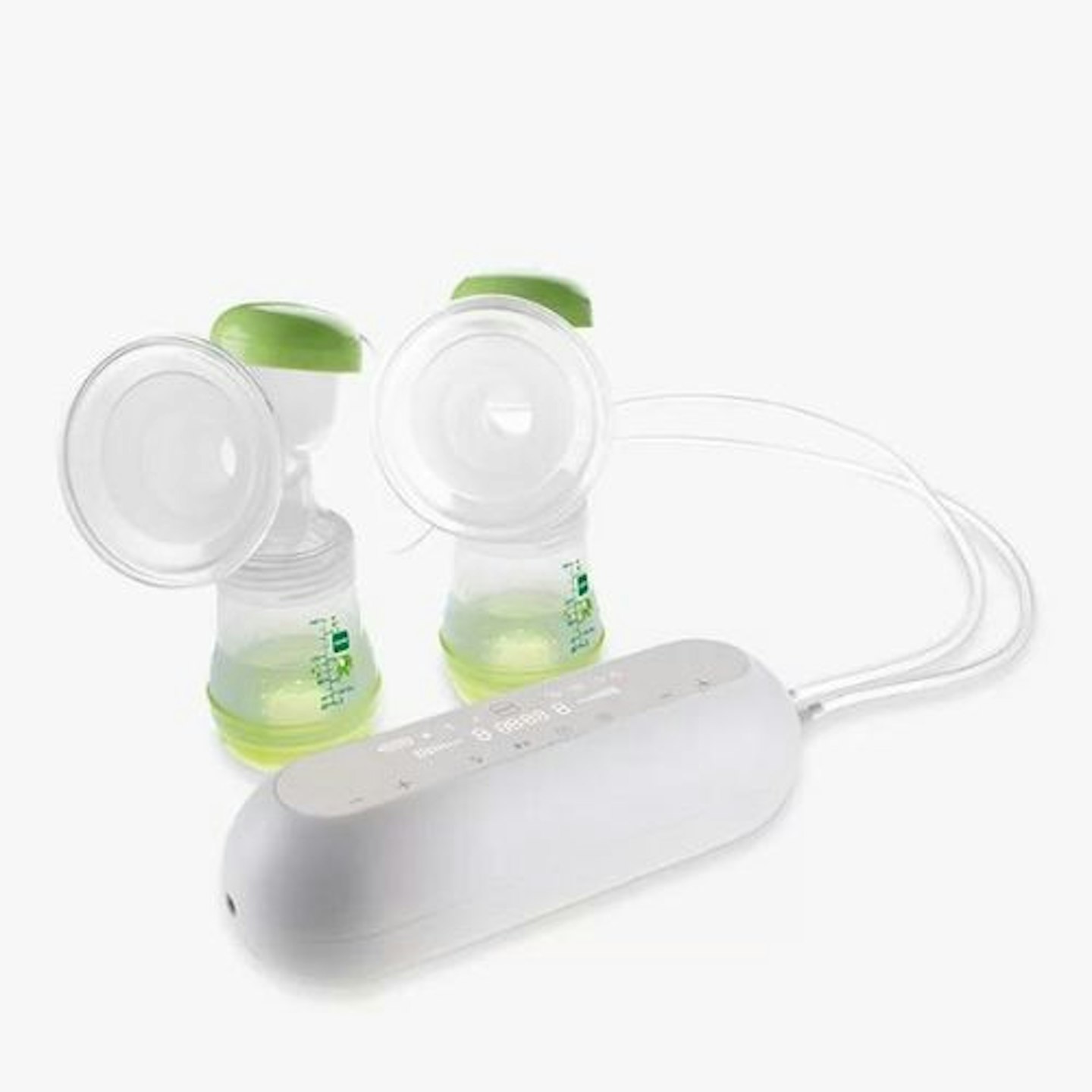 John Lewis
John Lewis We love this pump because it offers both the practicality of an electric breast pump and the flexibility of a manual pump. The MAM 2-in-1 Double Pump allows mums to individually adjust the expression settings for each breast.
This device offers the ability for single breast pumping; dual expression; and alternating dual pumping, switching between left and right in 30-second cycles. There are nine different suction strengths to choose from in both stimulation and expression phases. It features a key lock, alarm, and timer. The pump converts to a manual in two simple steps and is compatible with MAM's Easy-Start bottles and milk storage pots.
Pros
- Easy to use
- Nine different levels
- Lightweight
- You can pump straight into the MAM bottle
Cons
- Some mums found you have to hold the pump to get a secure fit
| Type: | Electric |
| Milk Capacity: | 300ml |
| Dimensions: | 20 x 28 x D7.5cm |
Best breast pump for multi-tasking
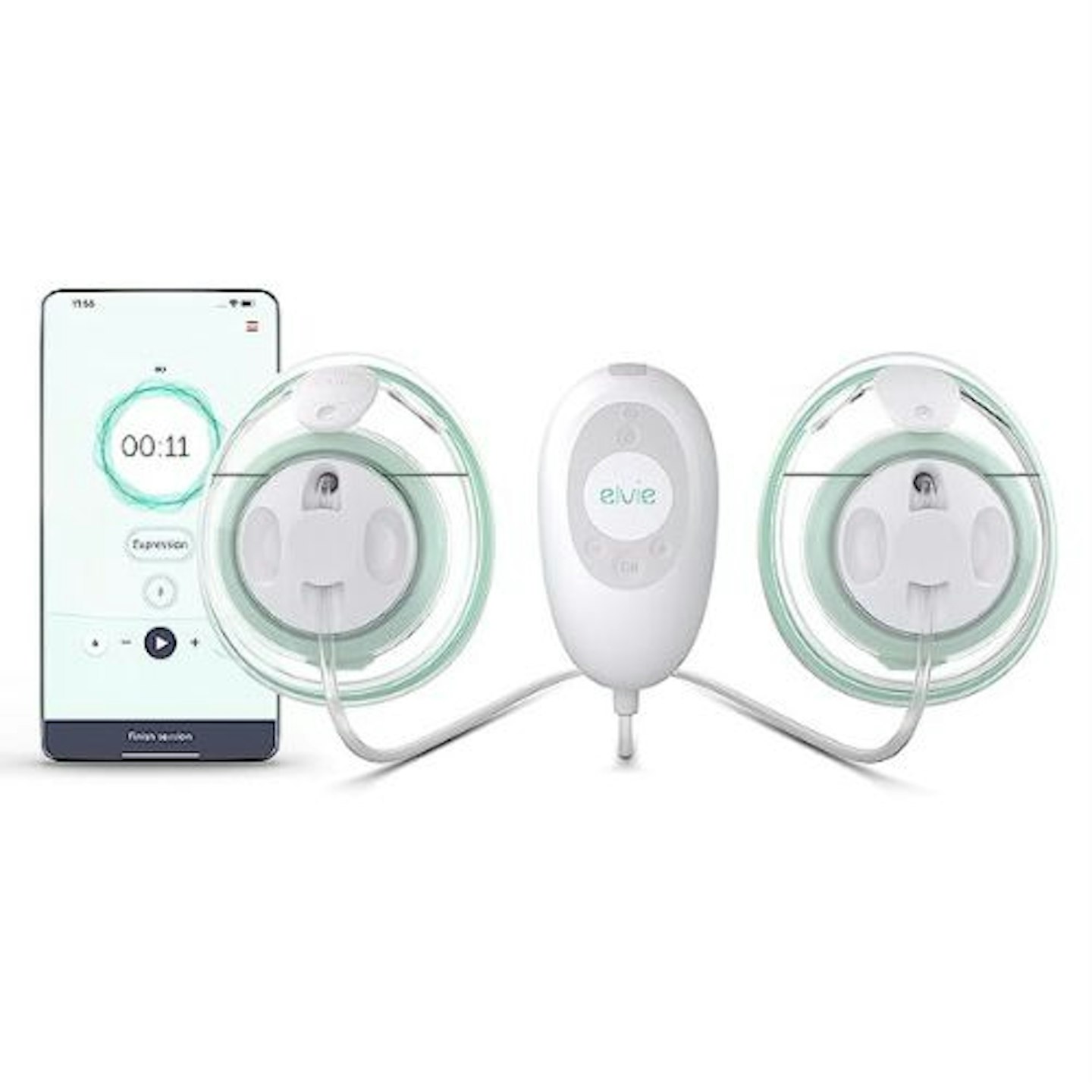 Amazon
Amazon The Elvie Stride is portable, lightweight and, best of all, it's practically silent! The unique cupped design means no bottles are hanging, and you can comfortably wear it on the move. You can also track how much milk you express with the Elvie App, which records how long you have been expressing. We love that you can save your default speed preference on how you'd like to express.
Pros
- Hospital-grade
- Hands-free
- Smart-app technology
- Discreet
Cons
- Some mums suggest it doesn't produce as much milk as other options
| Type: | Electric |
| Battery: | 2.5 hours |
| Dimensions: | 28 x 12.5 x 5.5 |
| Weight: | 1.34kg |
| Milk Capacity: | 150ml each |
Best breast pump with natural suction
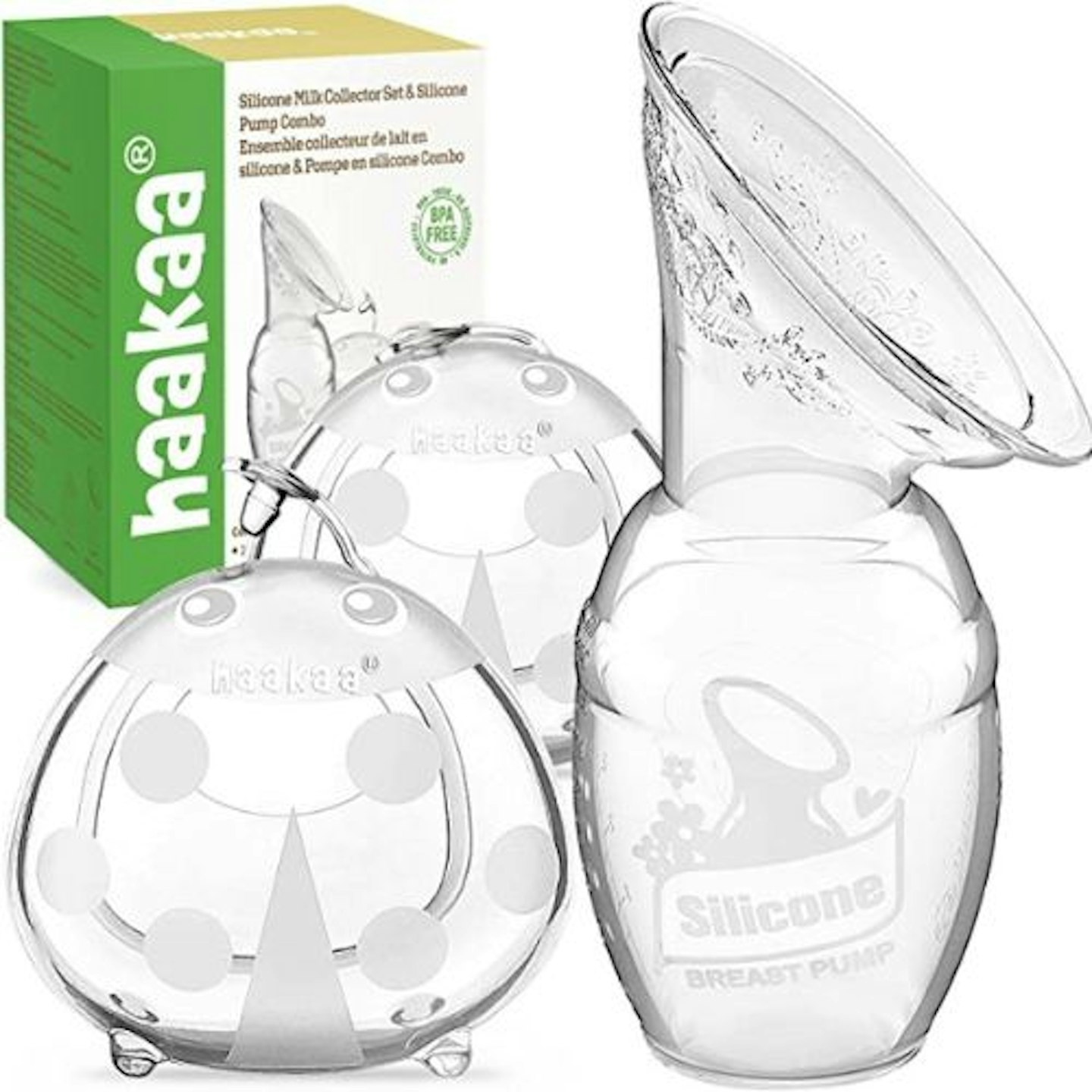 Amazon
Amazon The Haakaa Manual Breast Pump is among the easiest to use. This pump uses natural suction to collect milk, and when nursing, the Haakaa pump can be put onto the breast to help catch the overflow. Although it doesn't have any electrical elements, it is a great way to collect extra milk. You can avoid wetting your clothes and your little one. We think this is a fantastic purchase for mums who are breastfeeding or alongside an electric breast pump.
This kit comes with two ladybug breast shells with no extra parts. It is a great way to store breast milk, and it is easy to clean.
Pros
- BPA Free
- Reusable
- Painless breastmilk collecting
- Easy to clean
Cons
- Time-consuming
| Type: | Manual |
| Capacity: | Pump - 100ml, breast shell - 75ml |
Best manual breast pump
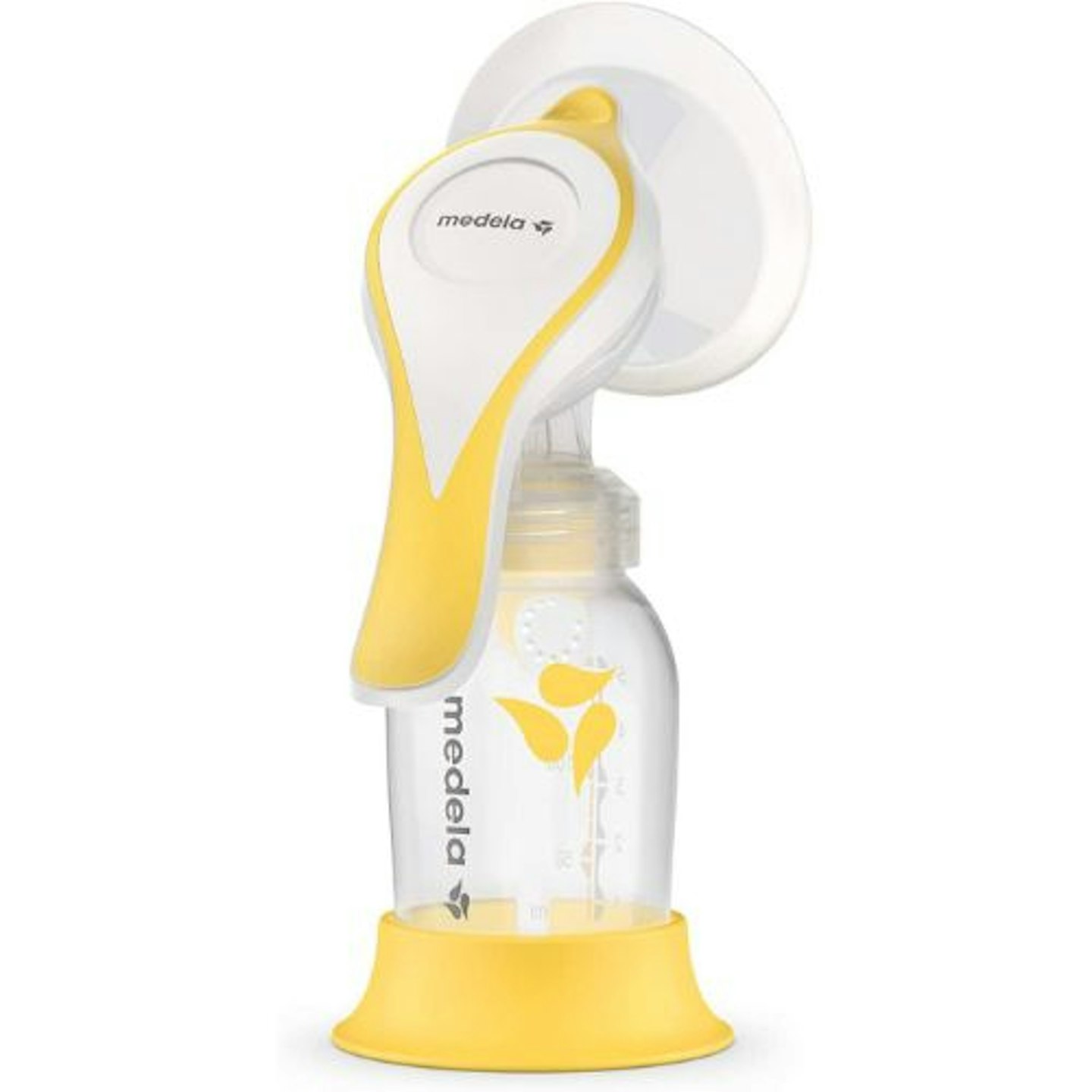 Amazon
AmazonThe Medela Harmony Manual Breast Pump is a great option if you're looking for something compact. We love that it is small enough to fit into your handbag or changing bag, and it's a great pump for mums who prefer manual control. This lightweight device is a great pump for taking on holiday, and we love that this pump has a flexible rim that it can be rotated 360 degrees, so you can easily adapt its position to suit your breast shape.
Pros
- Comfortable to use
- Two speeds
- Highly efficient
- Compact
Cons
- Shield is a little bit hard
| Type: | Manual |
| Dimensions: | 17 x 20 x 7 cm |
| Weight: | 200g |
Best compact electric breast pump
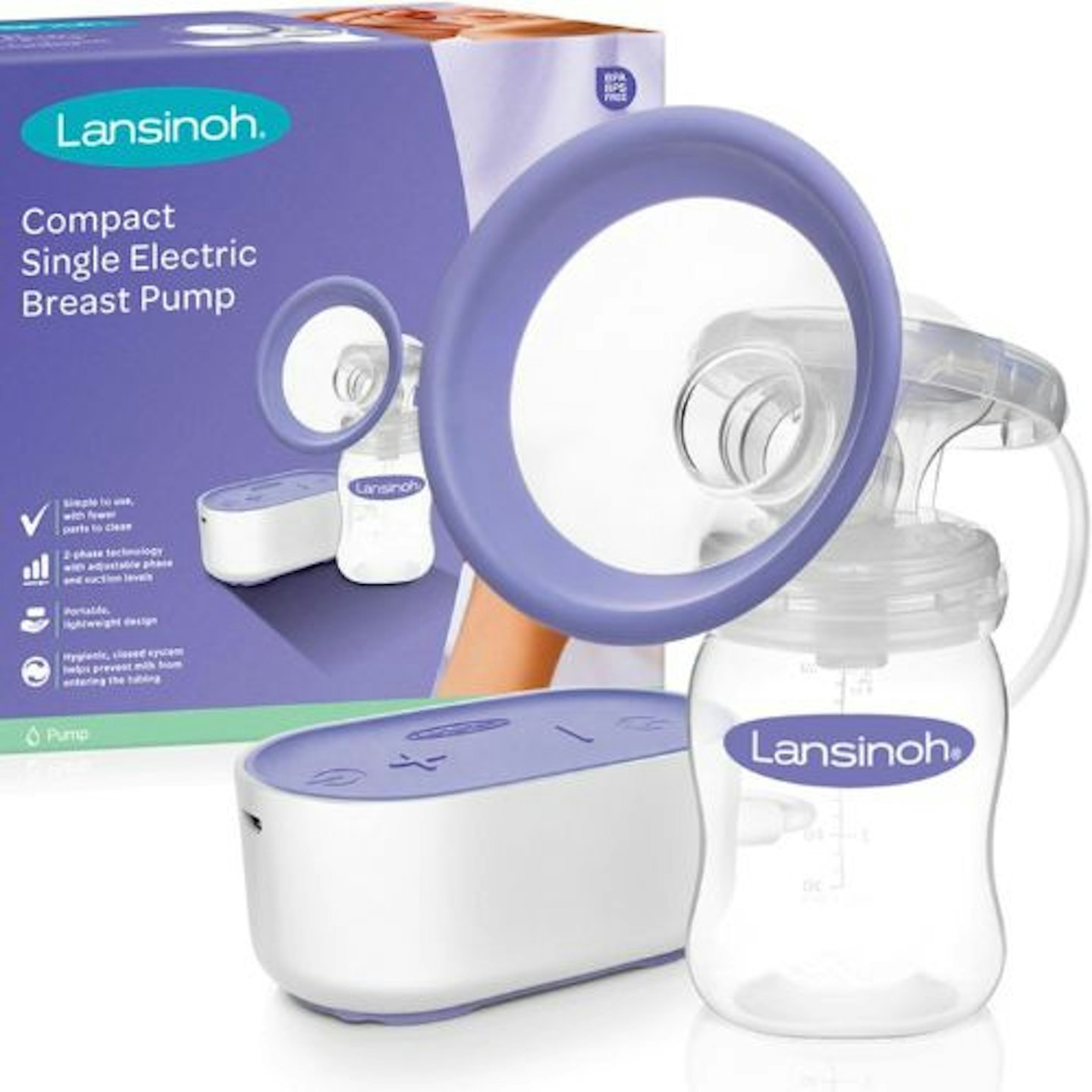 Amazon
Amazon This compact Lansinoh Compact Single Electric breast pump has five adjustable suction levels, and we love that this pump gives you more control as you can select the strength to suit you. It comes with a compatible micro USB adapter that is available if you want to use it away from home - making it ideal for expressing when you're out and about. It has two pumping phases and variable suction levels, which are simple to adjust using the controls on top of the unit. Impressive! This pump is designed to mimic the way a baby naturally feeds. A bottle with teat and sealing cap is included.
Pros
- Lightweight
- Comfortable
- Portable
- Compact
- Digital display
Cons
- Only mains-operated
| Type: | Electric |
| Milk Capacity: | 200ml |
| Dimensions: | 20.2 x 19.4 x 11.6cm |
| Weight | 250g |
FAQs
What to consider when buying a breast pump:
Noise: Electric pumps can be notoriously noisy. This is something to factor in if you plan to express while your baby is asleep nearby or when you're at work. Although there are some quiet electric pumps, manual pumps are much quieter, and some models make no noise at all.
Storing breast milk: If you plan to exclusively pump or you're planning time away from your baby, you will want to ensure you have somewhere clean and sterile to store your breastmilk. If you intend to feed your baby within days (four days max), go for a pump that lets you express milk directly into a clean, sterilised bottle until you're ready to use it. Breast milk can be stored for around six months.
Location: If you like the thought of not being confined to one spot when you're expressing, choose a pump that is wireless or takes a battery. However, if you're the type of person who walks around with their phone battery on red, a mains-operated pump might suit you better.
Size and weight: If you are planning to take your pump out and about, and you don't want anything too big or heavy weighing down your changing bag, make sure to take a look at the product's dimensions and opt for a lightweight option.
Types of breast pumps:
Electric pumps: Electric pumps are the most popular way to express milk, as you can adjust both speed and suction. Electric pumps come in both single and double pumps, allowing you to express milk from one or two breasts at the same time. Generally, this is the most efficient way to express milk. We recommend electric pumps to mums of multiples or for mums who want to maintain their milk supply working.
Manual breast pumps: Manual breast pumps are a brilliant option for mums who are primarily breastfeeding but want the option to pump. When using a manual pump, you place the breast cup over your breast and squeeze the handle to extract the milk, which collects in a storage container or bottle. Manual breast pumps tend to cheaper and be easier to use, and a lot of mums feel that they have more control.
Hands-free breast pumps: As the name suggests, hands-free breast pumps allow you to collect milk whilst you do other things. Hands-free pumps are a great option for mums who have multiple or older children and mums who generally never sit down for more than ten minutes (We know right, isn't that all of us).
What to know before using a breast pump:
Expressing is easier and more efficient if you feel relaxed. We're not going to lie and say this is going to be your favourite way to unwind, but try and put on your favourite Netflix show and grab some snacks before you start expressing. Try to pick a pump that's appealing to look at and comfortable. Anything too clinical is likely to make you feel more stressed. Choose a pump that's quick and easy to assemble. You will need to be confident in putting it back together once you've taken it apart for cleaning and sterilising, and trying to find lots of small parts is not what you want to spend your day doing.
The breast cup fits over your breast inside the pump funnel. It must fit well for optimal milk drainage as well as comfort. Some pumps come with more than one cup, so you can try different sizes to find the best fit. Start slow. As tempting as it can be to whack it up to full suction, it doesn't always result in a better milk production. In fact, you're more likely to end up causing yourself discomfort.
Do I need to have a breast pump?
Whether you plan to breastfeed or exclusively pump, you will probably need a breast pump at some point. However, if you're only planning on expressing occasionally, a manual pump is often a better and cheaper option. Manual pumps tend to be much easier to use, and they don't require charging. That said, manual breast pumps are much more labour-intensive. If you want to express milk quickly and efficiently, an electric breast pump is definitely worth the investment.
Is it ok to just pump instead of breastfeeding?
Of course! A fed baby is a happy baby. Breast milk offers so many benefits to your infant. But we know that exclusively breastfeeding isn't always a viable option for everyone. Whether it's due to a baby who cannot latch, returning to the workplace or feeling like you just no longer want to breastfeed, exclusively pumping is a fantastic way for your baby to get the benefits of breastmilk without breastfeeding.
Is there a downside to pumping?
There are lots of benefits to pumping. However, there are also a few side effects which some mums experience. One of the most common side effects is causing pain in your breasts or nipples. Usually, this is due to incorrectly positioning your pump or using a setting which is too high. As previously mentioned, always ensure you are starting at the lowest setting and slowly working your way up.

Hannah Carroll is a Parenting, Lifestyle and Home Product writer for Grazia, specialising in product testing and reviews. With three children, Hannah loves testing the latest industry products on her own family.
